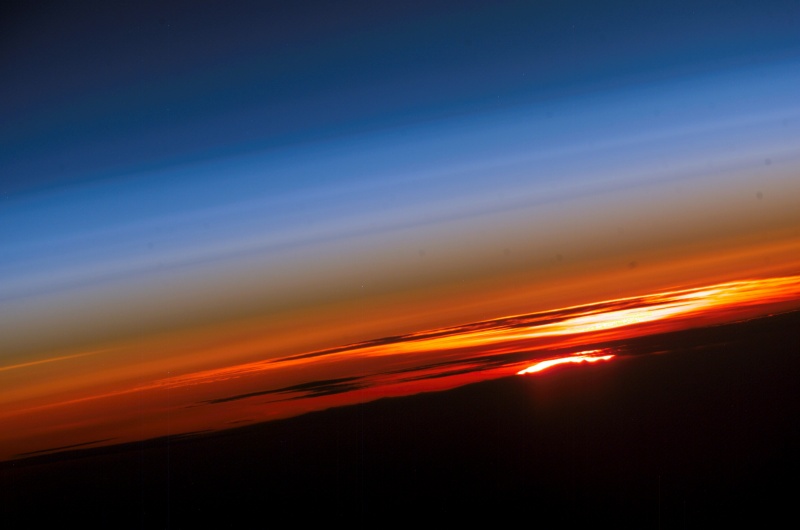
|
Credit & Copyright: Expedition 15 Crew,
NASA
Explanation:
Today, the
Sun crosses the celestial equator heading north at 0548
UT.
Known as the equinox, the geocentric astronomical event marks the
first day of spring in the northern hemisphere and autumn in the
south.
Equinox means
equal
night and with the Sun on the celestial equator,
Earth dwellers
will experience nearly 12 hours of daylight and 12 hours of darkness.
Of course, for those
in the north, the days will grow longer with the
Sun marching higher
in the sky as summer approaches.
To celebrate the equinox, consider
this colorful view of the setting Sun.
Recorded last June from the International
Space Station, the
Sun's limb still peeks above the distant horizon as seen from Earth
orbit.
Clouds appear in silhouette as
the sunlight is reddened by dust in the dense lower atmosphere.
Molecules in the more tenuous upper atmosphere are preferentially
scattering blue light.
|
January February March April May June July August September October November December |
| |||||||||||||||||||||||||||||||||||||||||||||||||||||||
NASA Web Site Statements, Warnings, and Disclaimers
NASA Official: Jay Norris. Specific rights apply.
A service of: LHEA at NASA / GSFC
& Michigan Tech. U.
Based on Astronomy Picture
Of the Day
Publications with keywords: equinox - sunset
Publications with words: equinox - sunset
See also:
- APOD: 2025 June 15 Á Two Worlds One Sun
- APOD: 2024 September 22 Á Chicagohenge: Equinox in an Aligned City
- Sunrise Shadows in the Sky
- APOD: 2024 March 19 Á A Picturesque Equinox Sunset
- APOD: 2023 March 19 Á Equinox at the Pyramid of the Feathered Serpent
- Equinox Sunrise Around the World
- September Sunrise Shadows
